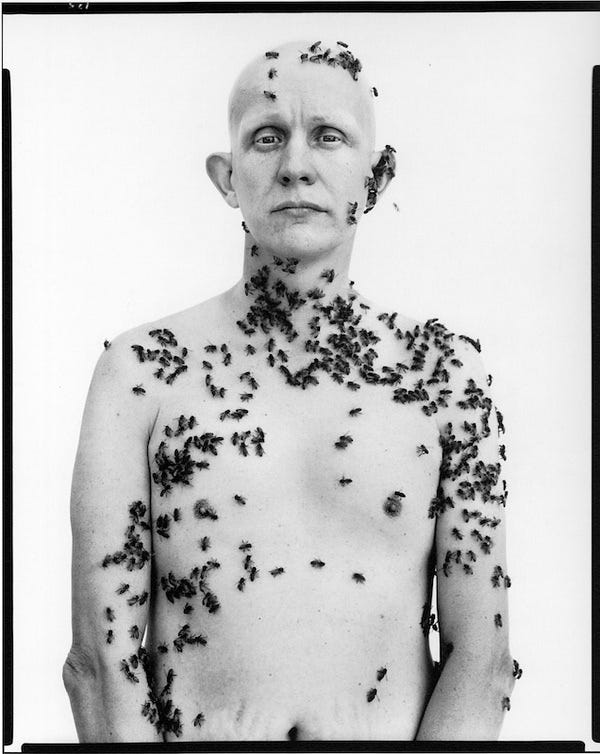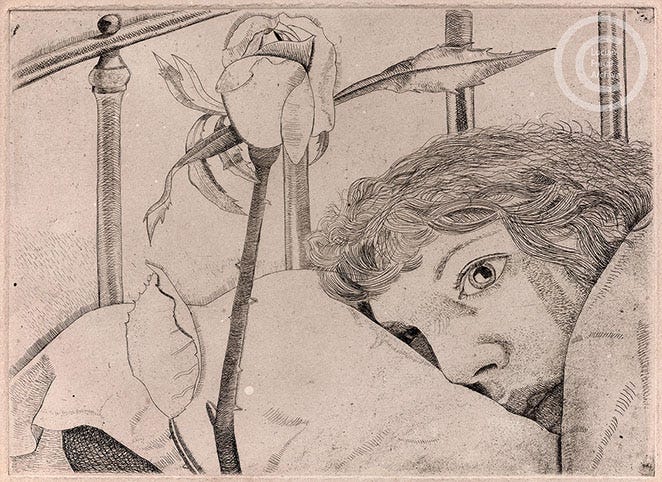I started the week with a little commissioned portrait for someone who said, “Paint me as you see me.” I was struck by that, because after all, it’s putting a lot of trust in the artist, isn’t it? It’s almost like asking someone what you think of them. You might be wondering if the person was someone I know or a stranger, and well, it happens to be someone I’ve known for a few years, an acquaintance on his way to becoming a friend.
This is an advantage for the painter.
The question is, by what means does one capture that thing you see, and more importantly—what do you feel when you observe that life sitting in front of you? How do you set that spirit down on paper, or as in this case, on a blank digital page? After all, these are just marks. Dabs of color. The marks have to be the right size, shape, length and direction in x, y and z space to constitute a likeness. Yet, there is more than just correctness at play.
Doing a portrait is a fascinating exercise, storytelling as visual description. It takes form through the accrual of countless, tiny decisions taken, sometimes over days, weeks, months or years, to reach something that shows not just objective verisimilitude, but some deeper truth, something that might require a writer to cross over from prose into poetry.
As beautiful as photography can be, there is something about drawn portraits that the all-seeing camera doesn’t have, a special tactile sense, a different way of making texture palpable. This doesn’t mean that the camera can’t editorialize and mediate what it sees. In the hands of a talented photographer, you get an image that is unique and speaks volumes, and this is why I can only say that it’s different from drawing. That difference is underlined by the impulse of photographers to produce work that is “painterly”, and of painters to work in hyper-realistic or photo-realistic styles.
A drawn portrait can be simple and still put us firmly in its world. It can pin down subtexts through its ability to transmit unequivocal symbolism and pathos.
But so can photography.
The process, however, is different. Photography, to a certain extent, is waiting for something resonant to present itself. The photographer is alert, and makes use of speedy reflexes, like a hunter. There will be time later in post-production to finesse the image.
But drawn portraits attack a subject, one declaration after another. They draw on the subconscious, and the artist finds complexity in varying gesture and material preference.
I have spent hours on the trains drawing people I don’t know, and then running home to make formal portraits from sketches, documenting photos and sheer memory. If I’m being honest, my question confounds me. How does one capture a feeling and then endow it with a narrative that only exists for a fleeting moment in space, or actually only exists in one’s imagination?
I still don’t know. If I did, perhaps I could begin to answer the general question: what is art?
John Singer Sargent once said, “A portrait is a painting with something a little wrong with the mouth.” Yes, that’s it. Something imperfect that describes the subject perfectly…
[Don’t forget to hit the LIKE button, if you enjoy the piece. Subscribe if you want to receive a new article each week. For the time being, it’s all free ….]











Great post! All true!